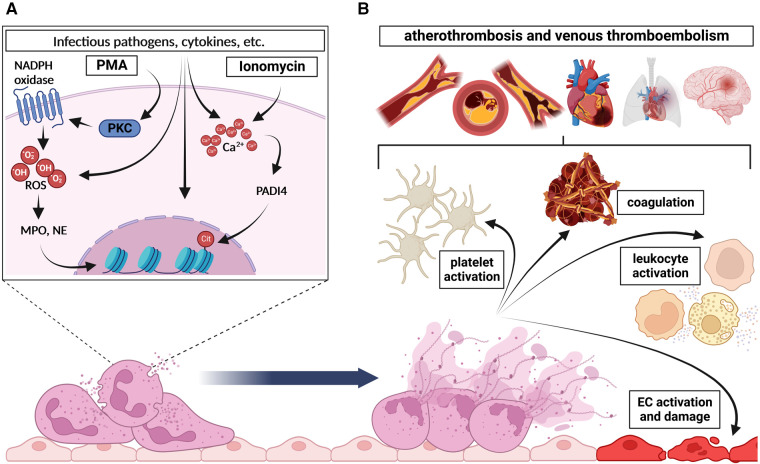Figure 1.
Basic mechanism of NETosis and its downstream effects. (A) In general, two main intracellular pathways of NETosis are distinguished: (1) Induction of NADPH oxidase by protein kinase C (PKC) upon PMA stimulation causes excessive reactive oxygen species (ROS) generation, which is followed by MPO- and NE-dependent degradation of the cytoskeleton, disruption of the nucleosome packaging, and the disintegration of the nuclear membrane, and finally leads to the release of NETs. (2) Stimulation of PADI4 by increased Ca2+-levels upon ionomycin stimulation for instance induces citrullination of histones, which disrupts nucleosome stability and leads to chromatin decondensation. This, together with the disintegration of the nuclear and plasma membrane, results in the release of NETs. (B) Once expelled in the circulation, NETs and associated molecules affect several cells and processes namely (1) platelet activation and aggregation, (2) coagulation, (3) leukocyte activation and (4) endothelial cell (EC) activation or damage respectively. Altogether, these processes finally culminate in the development and progression of atherothrombosis and venous thromboembolism. Created with BioRender.com.

